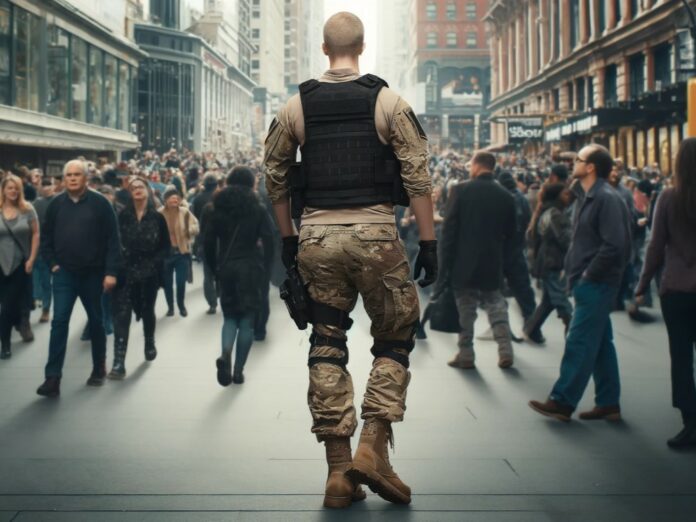Wearing tactical gear in public is a topic of interest and concern for many individuals. Tactical gear, often associated with military or law enforcement personnel, is designed to provide functional and protective advantages in high-risk situations. To fully understand the implications of wearing tactical gear in public, it is important to delve into its definition, types, legal considerations, benefits and advantages, potential concerns and drawbacks, as well as tips for responsible usage.
Tactical gear encompasses a wide range of equipment and apparel designed for specific purposes. It includes items such as vests, holsters, belts, boots, and accessories that are designed to enhance personal protection and operational effectiveness. Understanding the types of tactical gear available is essential in order to evaluate their appropriateness for public use.
When considering wearing tactical gear in public, legal considerations play a crucial role. Laws and regulations regarding the possession and display of tactical gear can vary significantly depending on the jurisdiction. Understanding local laws regarding open carry, concealed carry, permits, and licensing is necessary to ensure compliance and avoid potential legal consequences.
Wearing tactical gear in public can offer several benefits and advantages. Personal protection is often cited as a primary reason, as tactical gear can provide added security and readiness in unexpected situations. Enhanced preparedness is another advantage, allowing individuals to carry essential tools and resources comfortably. Tactical gear is known for its utility and functionality, with features that facilitate quick access to necessary items.
However, there are potential concerns and drawbacks associated with wearing tactical gear in public. Perception and misconceptions can arise, as some may associate tactical gear with aggression or lawlessness. Intimidation and fear may be triggered in certain individuals, potentially leading to negative interactions or discrimination. There is the risk of legal backlash if wearing certain types of tactical gear violates local laws or prompts unnecessary attention from law enforcement.
To wear tactical gear responsibly in public, several tips can be followed. Awareness of local laws and regulations is paramount; individuals should thoroughly understand the legal boundaries and restrictions pertaining to the possession and display of tactical gear. Maintaining a non-threatening appearance can help alleviate unnecessary concerns and minimize negative perceptions. Lastly, being mindful of the environment and context is essential; the appropriateness of wearing tactical gear may vary depending on the location, occasion, and purpose.
By gaining a comprehensive understanding of tactical gear, legal considerations, benefits and advantages, potential concerns and drawbacks, as well as responsible usage tips, individuals can make informed decisions about whether or not to wear tactical gear in public settings.
Understanding Tactical Gear
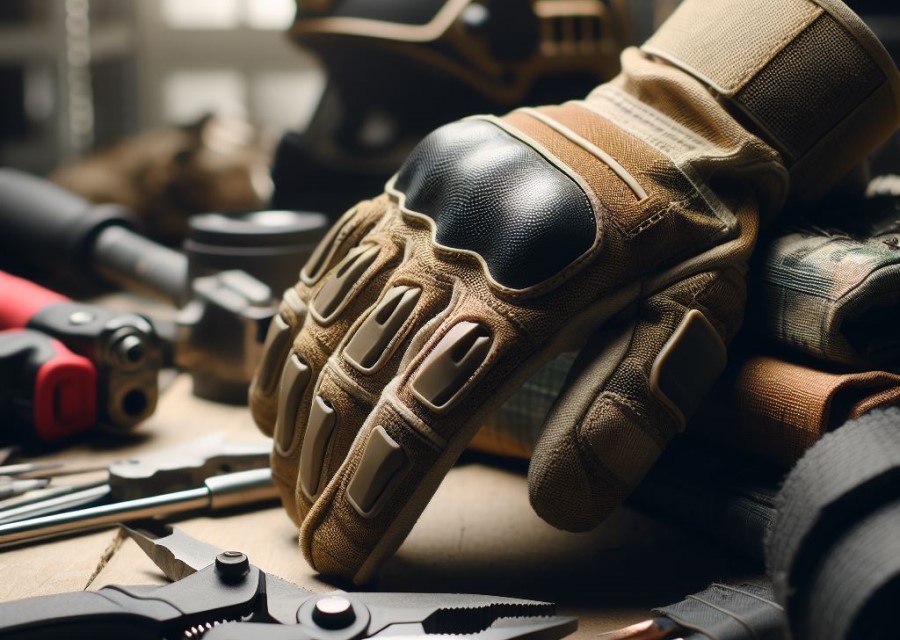
Understanding tactical gear is crucial for individuals who require specialized equipment for specific purposes. Here are vital factors to take into account:
- Tactical gear is specifically designed for military, law enforcement, and other tactical professionals who necessitate equipment that enhances their performance and safety in high-risk situations.
- Body armor, helmets, tactical vests, gloves, and combat boots are some common types of tactical gear.
- Tactical gear is crafted using durable materials like ballistic nylon and reinforced polymers to withstand harsh environments.
- Functionality plays a key role in tactical gear, incorporating features like MOLLE (Modular Lightweight Load-carrying Equipment) systems for easy customization and attachment of accessories.
An important aspect to note about tactical gear is that it is subjected to rigorous testing to ensure its quality and performance. Manufacturers adhere to international standards, such as NIJ (National Institute of Justice) standards for body armor, to provide reliable and effective gear for professionals.
What is Tactical Gear?
Tactical gear refers to specialized equipment and clothing designed for individuals in law enforcement, military, or other tactical professions. It includes items such as tactical vests, holsters, helmets, boots, and gloves that enhance the user’s safety, readiness, and performance. Tactical gear is specifically engineered to withstand rugged environments and provide the necessary tools for completing tasks effectively and efficiently.
One key characteristic of tactical gear is its durability. The materials used in its construction, such as high-quality nylon and reinforced stitching, ensure that it can withstand intense physical demands and harsh conditions. Another important aspect is the functionality it offers. Tactical gear is equipped with numerous pockets, attachment points, and quick-release systems to provide easy access to essential tools and equipment.
Tactical gear also emphasizes personal protection. It often includes features like ballistic protection, stab resistance, and impact absorption to safeguard the wearer during potentially dangerous situations. Additionally, it promotes enhanced preparedness by allowing individuals to carry essential items such as first aid kits, communication devices, and ammunition.
Pro-tip: When considering tactical gear, ensure it aligns with your specific needs and objectives. Choose gear that is appropriate for your intended use, fits comfortably, and is compatible with any additional equipment you may need to carry. Regularly maintain and inspect your gear to ensure its functionality and extend its lifespan.
Types of Tactical Gear
Tactical clothing: There are different types of tactical gear, including tactical pants, shirts, jackets, and vests. These items are specifically designed to provide durability, comfort, and functionality in tactical situations.
Tactical footwear: Tactical gear also includes tactical boots. These boots are designed to offer ankle support, traction, and durability for demanding outdoor activities. They often have protective features like puncture resistance and waterproofing.
Tactical bags and backpacks: Another type of tactical gear is tactical bags and backpacks. These bags are designed with multiple compartments and pockets, making it easy to organize and carry essential gear. They are made of durable materials and may have features like MOLLE webbing for customization.
Tactical accessories: Tactical gear also includes various accessories such as tactical belts, gloves, hats, and eyewear. Tactical belts are adjustable and offer options for attaching holsters, pouches, and other gear. Tactical gloves provide protection and dexterity, while tactical hats and eyewear offer sun protection and impact resistance.
Tactical holsters: For securely carrying firearms, there are different types of tactical holsters available. These include inside-the-waistband (IWB) holsters, outside-the-waistband (OWB) holsters, and shoulder holsters.
Tactical knives: Another type of tactical gear is tactical knives. These knives are specifically designed for self-defense and survival situations. They often have features like a fixed blade, serrated edge, and ergonomic handle for a secure grip.
Tactical lights: Tactical flashlights are compact and powerful. They come with multiple brightness settings and features like strobe mode, which can be useful for disorienting potential threats.
Tactical communication devices: Tactical gear also includes communication devices like radios and headsets. These devices are essential for effective communication in tactical situations.
Legal Considerations of Wearing Tactical Gear in Public
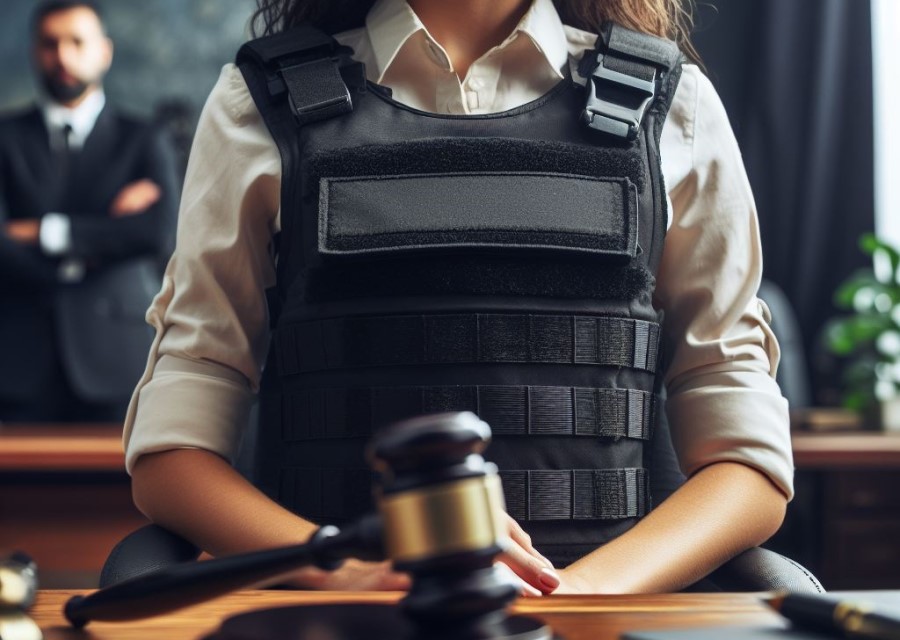
Wearing tactical gear in public is a topic that raises important legal considerations. In this section, we will explore the laws and regulations surrounding the use of tactical gear, as well as delve into understanding open carry laws, concealed carry laws, and the need for permits and licensing.
Get ready to uncover the facts and gain a clearer understanding of the legal landscape surrounding tactical gear in public settings.
Laws and Regulations
In order to wear tactical gear in public, it is important to understand the laws and regulations surrounding its use.
Each jurisdiction may have different laws and regulations regarding the wearing of tactical gear in public.
It is crucial to familiarize yourself with the specific laws and regulations of your area to avoid any potential legal issues.
Some areas may require permits or licensing for individuals to wear tactical gear in public.
Understanding open carry laws is essential, as some jurisdictions may allow the visible carry of firearms or other weapons while wearing tactical gear.
Concealed carry laws are also relevant, as they dictate whether or not it is permissible to carry concealed weapons while wearing tactical gear.
While wearing tactical gear, it is important to comply with all applicable laws and regulations to avoid any legal backlash.
Understanding Open Carry Laws
Understanding open carry laws is essential when considering wearing tactical gear in public. Open carry refers to the legal practice of openly carrying firearms or other weapons in public. It is crucial to familiarize yourself with the specific laws and regulations in your jurisdiction regarding open carry.
1. Laws and Regulations:
It is important to know the laws and regulations governing open carry in your area. Understanding the legal requirements and restrictions will help ensure that you are compliant and avoid any legal issues. These laws can vary significantly from state to state or even within different municipalities.
2. Rights and Restrictions:
While open carry may be legal in some places, certain restrictions may apply. It is essential to be aware of these limitations to avoid unintended violations. Restrictions could include prohibited locations such as schools, government buildings, or private properties where firearms are not allowed.
3. Public Perception:
Openly carrying firearms or tactical gear in public can elicit different responses from the public. Understanding how your appearance may be perceived by others is crucial to maintaining a non-threatening appearance and avoiding unnecessary alarm. Public perception can range from acceptance to uneasiness or fear.
4. Interactions with Law Enforcement:
Being knowledgeable about open carry laws can help you navigate encounters with law enforcement. It is important to know how to interact respectfully with officers and provide any necessary identification or permits if required.
Remember, open carry laws can change, so staying informed and regularly checking for updates is vital. By understanding open carry laws, you can exercise your rights responsibly and ensure a safe and legal experience for yourself and those around you.
Concealed Carry Laws
Concealed carry laws, which pertain to the regulation of firearms being carried in a concealed manner in public, vary among different states and jurisdictions. It is crucial to familiarize yourself with the specific concealed carry laws applicable in your area. Adhering to these laws is essential to avoid any legal consequences.
Concealed carry laws often mandate individuals to acquire a permit or license before carrying a concealed firearm. These permits usually entail undergoing background checks, meeting training requirements, and paying application fees. Failing to comply with these regulations can lead to criminal charges and penalties.
Moreover, concealed carry laws may impose restrictions on the permissible locations to carry concealed firearms. Certain places such as government buildings, schools, and private property may prohibit concealed carry. It is vital to comprehend these constraints to prevent unintentionally violating the law.
Complying with concealed carry laws upholds public safety and responsible firearm ownership. It guarantees that only individuals who have fulfilled the necessary prerequisites carry concealed firearms in public. By abiding by these laws, individuals can exercise their right to self-defense while respecting the prevailing legal framework.
Keep in mind that laws concerning concealed carry are subject to change. Therefore, it is crucial to stay informed about any modifications that may occur in your jurisdiction. Always consult local authorities or legal resources to obtain accurate and up-to-date information regarding concealed carry laws in your area.
Benefits and Advantages of Wearing Tactical Gear in Public
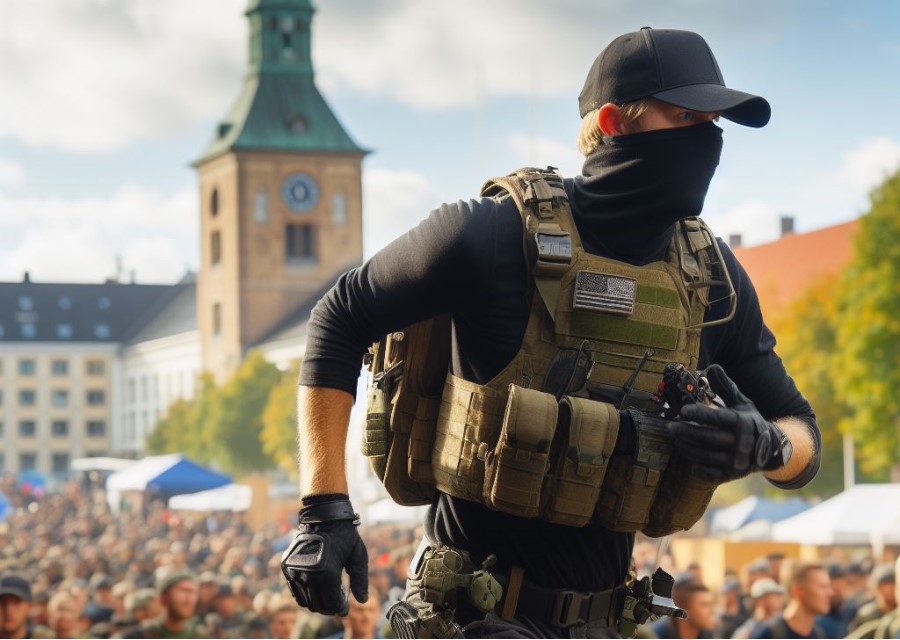
Imagine feeling more secure, prepared, and capable as you navigate through your daily activities. In this section, we’ll uncover the many benefits and advantages of wearing tactical gear in public.
We’ll explore how it can provide personal protection, enhance your preparedness for unexpected situations, and offer utility and functionality in various practical scenarios. Prepare to discover why tactical gear isn’t just for the movies—it can be a valuable asset in real-life situations.
Get ready to dive into the world of tactical gear, where safety meets style.
Personal Protection
Personal protection is one of the most important advantages of wearing tactical gear in public. The utilization of tactical gear can greatly contribute to enhancing individuals’ safety and minimizing the risk of potential harm in various circumstances.
For instance, wearing protective body armor can offer essential safeguarding against potential threats like bullets or sharp objects, significantly increasing the likelihood of survival.
Furthermore, tactical gear such as helmets and goggles can shield individuals from head injuries or eye damage in emergencies or dangerous activities.
Incorporating tactical gloves can provide hand protection against cuts, abrasions, or impact, enabling individuals to maintain a secure grip and improved dexterity.
Enhanced Preparedness
Enhanced preparedness is possible with tactical gear in public situations.
Increased readiness and ability to handle emergencies can be achieved with the right gear.
In various situations, tactical gear such as a multi-tool or a flashlight with self-defense capabilities can provide practical assistance.
To ensure preparedness for unexpected events, it is important to carry essential items such as a first aid kit, emergency supplies, and a whistle.
In dangerous situations, wearing protective gear like a helmet or body armor can enhance safety.
Utility and Functionality
When it comes to utility and functionality, tactical gear offers a range of practical advantages. A table highlighting the key features and uses of tactical gear is shown below:
| Utility | Functionality |
|---|---|
| Protection | Tactical gear provides enhanced protection against various threats such as impacts, abrasions, and projectiles. It includes features like reinforced materials, padding, and ballistic resistance. |
| Organization | Tactical gear is designed with multiple pockets, compartments, and attachment points. This allows users to efficiently organize and carry their essential equipment, such as tools, communication devices, and medical supplies. |
| Versatility | Tactical gear is adaptable to different environments and situations. Modular systems and adjustable components enable users to customize their gear according to specific needs and preferences. |
| Ease of Use | Tactical gear is designed with user-friendly features such as quick-release buckles, adjustable straps, and easy-access closures. This facilitates quick and efficient deployment and use of equipment. |
Tactical gear provides utility and functionality that is highly valued by military personnel, law enforcement officers, outdoor enthusiasts, and individuals seeking self-defense options. Its purpose-built design and reliable performance make it an essential tool in demanding situations.
Fact: Tactical gear manufacturers often collaborate with professionals in various fields to ensure their products meet the highest standards of utility and functionality.
Potential Concerns and Drawbacks of Wearing Tactical Gear in Public
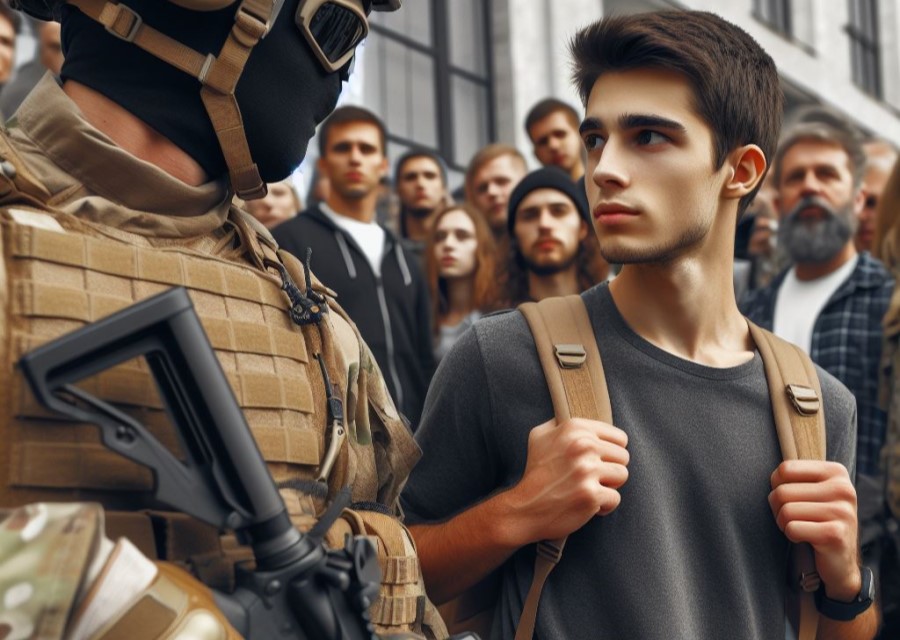
The potential concerns and drawbacks of wearing tactical gear in public are worth exploring. We’ll take a closer look at the perception and misconceptions surrounding this attire, as well as the impact it can have on both intimidation and fear.
Furthermore, we’ll delve into the legal backlash that can arise from donning such gear outside of appropriate contexts. Together, these aspects shed light on the complexities and considerations tied to wearing tactical gear in public.
Perception and Misconceptions
Perception and misconceptions surrounding the wearing of tactical gear in public can often arise due to a lack of understanding. It is important to address these misconceptions and provide factual information to promote accurate perceptions.
One common misconception is that individuals wearing tactical gear in public are solely associated with law enforcement or military personnel. However, it is essential to note that civilians may also choose to wear such gear for various reasons, including personal protection and enhanced preparedness.
Another misconception is that wearing tactical gear in public automatically implies aggressive or dangerous intentions. This is not necessarily the case, as individuals may wear tactical gear for its utility and functionality, such as carrying essential tools or equipment.
It is crucial to educate the public that wearing tactical gear does not automatically make someone a threat. Instead, it signifies an individual’s proactive approach to personal safety and readiness. Understanding these misconceptions can help foster a more informed and accepting perception of those choosing to wear tactical gear in public.
Intimidation and Fear
Intimidation and fear are two significant factors that should be taken into consideration when donning tactical gear in public. The appearance of tactical gear can at times be quite intimidating to individuals who may not be familiar with its intended purpose and usage.
This can result in a sense of fear or discomfort among those who come across individuals wearing such gear. Therefore, it is crucial to be mindful of this perception and approach situations in a non-threatening manner.
To address these concerns effectively, it is vital to comprehend the context and environment in which you choose to wear tactical gear. Having a thorough understanding of local laws and regulations is essential to ensure compliance and prevent any unnecessary alarm or disturbance.
In addition, maintaining a non-threatening appearance by exercising good judgment in terms of behavior and attitude can greatly help alleviate any intimidation or fear experienced by others.
Furthermore, engaging in clear and open communication when encountering individuals who may feel intimidated is also crucial. Taking the time to explain the purpose and rationale behind wearing tactical gear can help ease any fears and foster understanding.
By consistently demonstrating consideration and respect towards others, it is possible to mitigate the negative perceptions associated with tactical gear and foster a more positive and harmonious environment in public spaces.
Legal Backlash
Legal backlash is a genuine concern when donning tactical gear in public. It pertains to the adverse reactions or repercussions that individuals may encounter from law enforcement or the general public due to their choice of clothing.
Regrettably, some individuals may perceive tactical gear as intimidating or linked to illegal activities, even if the wearer has no malicious intentions. This can result in unnecessary attention from law enforcement or even members of the public who feel threatened.
It is essential to acknowledge that wearing tactical gear is generally legal, as long as it adheres to local laws and regulations. However, wearing tactical gear in public should be approached responsibly and with careful consideration of the potential legal backlash and societal perceptions.
Tips for Wearing Tactical Gear Responsibly in Public
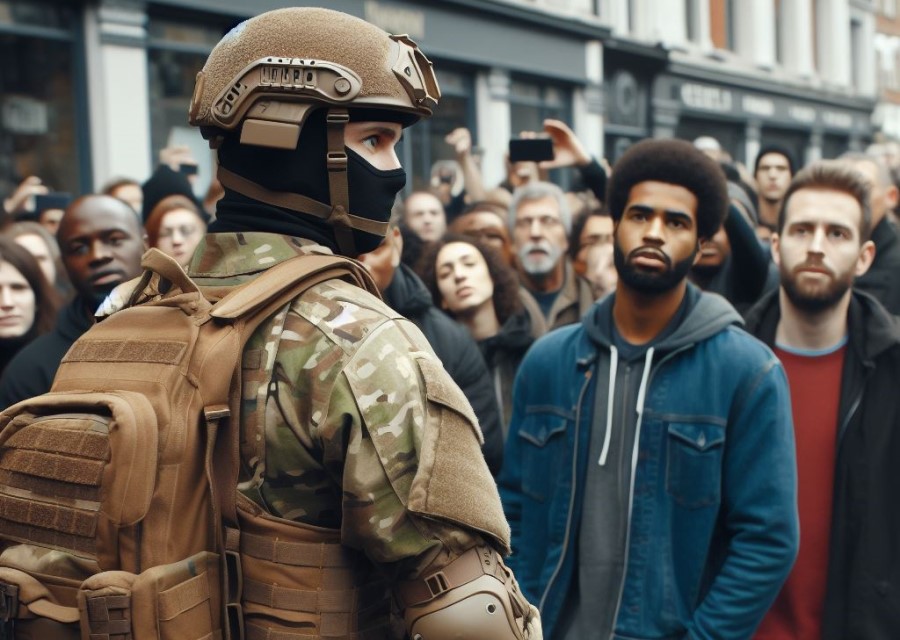
Discover practical tips on wearing tactical gear responsibly in public. Enhance your understanding of local laws and regulations, maintain a non-threatening appearance, and be mindful of the environment and context. These insights will help you navigate the world of tactical gear, ensuring that you engage with it responsibly and in a manner that is respectful to those around you.
Know the Local Laws and Regulations
Knowing the local laws and regulations is crucial when it comes to wearing tactical gear in public. It is important to understand and comply with the specific rules and guidelines set by your local jurisdiction.
Here are some key points to consider:
- Thoroughly research and familiarize yourself with the laws and regulations regarding the wearing of tactical gear in public in your area.
- Stay updated on any new regulations or amendments that may affect your ability to wear tactical gear.
- Consult with a legal professional who can provide accurate and up-to-date information if you are unsure about any specific laws or regulations.
- Adhere to any restrictions or requirements specified by the local laws, such as obtaining permits or licenses if necessary.
- Consider how wearing tactical gear may be perceived by the public and be respectful and mindful of others to prevent misunderstandings or conflicts.
By being aware of and following the local laws and regulations, you can ensure that you are wearing tactical gear in public responsibly and within the boundaries of the law.
Maintain a Non-threatening Appearance
When wearing tactical gear in public, it is crucial to maintain a non-threatening appearance to avoid causing alarm or misunderstanding.
- Choose neutral or subdued colors for your tactical gear, such as black, gray, or earth tones, to ensure that you don’t draw unnecessary attention.
- Avoid wearing excessively bulky or intimidating tactical gear. Instead, opt for functional and practical gear that does not appear overly aggressive.
- Make sure that your tactical gear does not have any offensive or threatening symbols or patches to alleviate any concerns or misconceptions from others.
- Keep your gear well-maintained and clean, as dirty or unkempt gear can give off a negative impression and contribute to a more threatening appearance.
- Consider the context and environment in which you will be wearing your tactical gear. For instance, if you are participating in a peaceful protest or attending a public event, it may be best to tone down your gear to avoid escalating tensions.
- Be conscious of your body language and demeanor. Maintain a calm and non-aggressive stance to emphasize that your intent is not to cause harm or intimidate others.
- Engage in respectful and polite communication with others while wearing tactical gear. This can help build trust and dispel any concerns that may arise.
Maintaining a non-threatening appearance while wearing tactical gear in public is vital to promote a sense of safety and understanding among those around you.
Be Mindful of the Environment and Context
Being mindful of the environment and context is crucial when wearing tactical gear in public. It is important to assess the specific situation you are in and consider how your gear may be perceived by others.
Remember, some people may be unfamiliar with tactical gear and may feel intimidated or fearful in its presence. By being aware of your surroundings and the people around you, you can ensure that your gear is not causing unnecessary discomfort or alarm.
Additionally, pay attention to the appropriateness of wearing tactical gear in different environments. While it may be acceptable and even expected in certain situations, such as law enforcement or military operations, it may not be suitable or necessary in everyday public settings. Consider the potential impact your gear may have on the overall atmosphere and atmosphere of the place.
To wear tactical gear responsibly in public, make an effort to maintain a non-threatening appearance. This can be achieved by being respectful, approachable, and avoiding any aggressive or confrontational behavior. Be prepared to explain the purpose and function of your gear if necessary, and always comply with any local laws and regulations regarding the wearing of tactical gear.
Frequently Asked Questions
Can I wear tactical gear in public?
Yes, you can wear tactical gear in public, but it is important to be aware of the specific laws and regulations in your local area. Different countries and states have different rules regarding the legality of carrying tactical gear in public.
What types of tactical gear are illegal to carry in public?
Certain types of tactical gear, such as firearms, non-lethal weapons, and camouflaged clothing, are generally illegal to carry in public. It is crucial to check your local laws before carrying any gear to avoid getting into trouble with authorities.
Can I wear camouflaged shirts similar to those worn by the military in public?
Wearing camouflaged shirts similar to those worn by the military may cause confusion and is illegal in some countries. It is important to check your local laws regarding the legality of wearing camouflaged clothing in public.
Are tactical pants legal to wear in public?
Yes, tactical pants, even with kneepads, are legal to wear in public. However, it is important to note that carrying a tactical vest may be illegal in some areas as it can cause confusion with local authorities.
Can I wear military equipment, such as helmets and jackets, in public?
No, wearing military equipment, including helmets, jackets, and face masks, is generally illegal to carry in public as it can cause panic and attract unwanted attention. Wearing military gear in public may lead to people calling the police.
What is the legality of wearing body armor in public?
While it is generally legal to wear body armor in public, there are specific rules and regulations regarding its purchase, ownership, and use. It is important to consult local laws and law enforcement for specific information regarding the legality of wearing body armor in your area.

